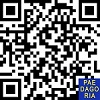ANXIETY IN SPEAKING ENGLISH; STUDENT’S ATTITUDE AND THE ROLE OF GENDER
Abstract
Abstrak: Penelitian ini bertujuan untuk mengetahui sikap kecemasan siswa dalam belajar berbicara bahasa Inggris ditinjau dari tiga aspek yaitu aspek perilaku, aspek kognitif dan aspek efektif. Selain itu, penelitian ini juga menyelidiki pengaruh perbedaan sikap terhadap kecemasan siswa antara siswa laki-laki dan perempuan dalam pembelajaran berbicara bahasa Inggris. Penelitian ini menggunakan metode penelitian kuantitatif dengan format statistik deskriptif. Partisipan dalam penelitian ini berjumlah 30 peserta yang terdiri dari mahasiswa semester 4 dan 6 Jurusan Pendidikan Bahasa Inggris Universitas Muhammadiyah Sorong. Pengumpulan data dilakukan dengan memberikan kuesioner sebagai alat ukur. Hasil penelitian menunjukkan bahwa nilai rata-rata siswa laki-laki pada aspek perilaku adalah 53,6 sedangkan siswa perempuan mendapat 55,7, sedangkan pada aspek kognitif siswa laki-laki mendapat 56 dan siswa perempuan mendapat 55,8. Selanjutnya pada aspek efektif nilai siswa laki-laki sebesar 20,3 dan siswa perempuan sebesar 20,6. Berdasarkan hasil penelitian diketahui bahwa dari ketiga aspek siswa laki-laki dan perempuan memiliki sikap positif di dalam kelas, kecemasan berkontribusi terlalu besar terhadap sikap siswa laki-laki. Ini menunjukkan siswa laki-laki lebih cemas daripada perempuan di kelas berbahasa Inggris.
Abstract: This research was written to investigate students’ attitudes of anxiety in learning to speak English in terms of three aspects namely behavioral, cognitive and effective aspects. Moreover, this research also investigates whether or not there’s a significant difference in attitudes toward students’ anxiety between male and female students in learning to speak English. This research used a quantitative method with descriptive statistics. The researcher took only 30 participants which consists of 4th and 6th semester students of the English Education Department of Universitas Muhammadiyah Sorong. The data were collected by giving the questionnaire as the measuring instrument. Research findings showed that the mean score of male students in the behavioral aspect was 53.6 while females got 55.7 meanwhile, in the cognitive aspect male got 56 and females got 55.8. Furthermore, in the effective aspect male students' score was 20.3, and female students' score was 20.6. Based on the result of this research revealed that regarding the three aspects male and female students had positive attitudes in the class, anxious contribute too much to the male students’ attitudes. It indicates male students are more anxious than females in English-speaking class.Keywords
Full Text:
PDFReferences
Fakeye, D. O. (2010). Students’ Personal Variables as Correlates of Academic Achievement in English as a Second Language in Nigeria. Journal of Social Sciences, 22(3). https://doi.org/10.1080/09718923.2010.11892803
Gardner, R. C. (1985). Social psychology and second language learning: The role of attitudes and motivation. Arnold.
Hashwani, M. S. (2008). Students’ attitudes, motivation and anxiety towards English language learning. Journal of Research and Reflections in Education, 2(22).
Ibnian, S. S. (2017). Attitudes of Public and Private Schools’ Students towards Learning EFL. International Journal of Education, 9(2). https://doi.org/10.5296/ije.v9i2.8797
KARAGÖL, İ., & BAŞBAY, A. (2018). The relationship among attitude, anxiety and English speaking performance. Journal of Theoretical Educational Science, 11(4), 809–821.
Lei, H., Cui, Y., & Zhou, W. (2018). Relationships between student engagement and academic achievement: A meta-analysis. Social Behavior and Personality, 46(3). https://doi.org/10.2224/sbp.7054
Lizawati. (2019). Students’ Attitude toward English Learning: A Study in a Junior High School. Academic Journal Perspective: Education, Language, and Literature, 7(2). https://doi.org/10.33603/perspective.v7i1.2515
Nurhaeni, N. (2019). Students’ Anxiety in Language Learning. EDUVELOP, 2(2), 81–86.
Ormrod, J. E., Anderman, E. M., & Anderman, L. H. (2016). Educational psychology: Developing learners. Pearson.
Ozer, Z., & Altay, I. F. (2021). Examining the level of enjoyment and anxiety among Turkish EFL students. Journal of Language and Linguistic Studies, 17(S1), 663–671.
Öztürk, G., & Gürbüz, N. (2013). The impact of gender on foreign language speaking anxiety and motivation. Procedia-Social and Behavioral Sciences, 70, 654–665.
Rajitha, K., & Alamelu, C. (2020). A study of factors affecting and causing speaking anxiety. Procedia Computer Science, 172, 1053–1058.
Rehman, I., Samad, A., & Ali, M. (2022). An Investigation Of The Role Of Gender In Foreign Langauge Learning Anxiety In Students Of Deartment Of English At Kust. Harf-o-Sukhan, 6(1), 246–268.
Richards, J. C. (2008). Teaching listening and speaking (Vol. 35, Issue 4). Cambridge university press Cambridge.
Sadighi, F., & Dastpak, M. (2017). The sources of foreign language speaking anxiety of Iranian English language learners. International Journal of Education and Literacy Studies, 5(4), 111–115.
Sayuri, S. (2016). Problems in speaking faced by efl students of mulawarman university. Indonesian Journal of EFL and Linguistics, 1(1), 47–61.
Teimouri, Y. (2018). Differential roles of shame and guilt in L2 learning: How bad is bad? The Modern Language Journal, 102(4), 632–652.
Uluelang, K. (2018). Exploring Students’ Speaking Ability At Muhammadiyah Sorong University (UMS). Qalam : Jurnal Ilmu Kependidikan, 6(1). https://doi.org/10.33506/jq.v6i1.250
Utomo, B. (2018). Students’ Anxiety in Speaking English. Unpublished. Makassar: Muhammadiyah University of Makassar.
Wael, A., Asnur, M. N. A., & Ibrahim, I. (2018). Exploring students’ learning strategies in speaking performance. International Journal of Language Education, 2(1). https://doi.org/10.26858/ijole.v2i1.5238
Wahyuningsih, S. (2018). Men And Women Differences In Using Language: A Case Study Of Students At Stain Kudus. EduLite: Journal of English Education, Literature and Culture, 3(1). https://doi.org/10.30659/e.3.1.79-90
Watson, D., & Friend, R. (1969). Measurement of social-evaluative anxiety. Journal of Consulting and Clinical Psychology, 33(4), 448.
Wenden, A. (1991). Learner strategies for learner autonomy. London: Prentice Hall.
Wong, M. S.-L. (2009). Language Anxiety and Motivation To Learn English : A Glimpse into The Form 4 Classroom. UPALS International Conference on Languages, April.
Yih, Y. J., Chin, V., & Ling, T. H. (2018). The role of gender in English language learning anxiety among tertiary students. E-Academia Journal, 6(2).
DOI: https://doi.org/10.31764/paedagoria.v14i1.12840
Refbacks
- There are currently no refbacks.
Copyright (c) 2023 Muhaiminah Akib, Dian Saputra, Alda Patty, Rezkiah Hartanti, Rinda Hardianti

This work is licensed under a Creative Commons Attribution-ShareAlike 4.0 International License.
Paedagoria : Jurnal Kajian, Penelitian dan Pengembangan Kependidikan
Fakultas Keguruan & Ilmu Pendidikan | Universitas Muhammadiyah Mataram.
_______________________________________________
 | Paedagoria : Jurnal Kajian, Penelitian dan Pengembangan Kependidikan |
______________________________________________
CURRENT INDEXING:
EDITORIAL OFFICE:


















